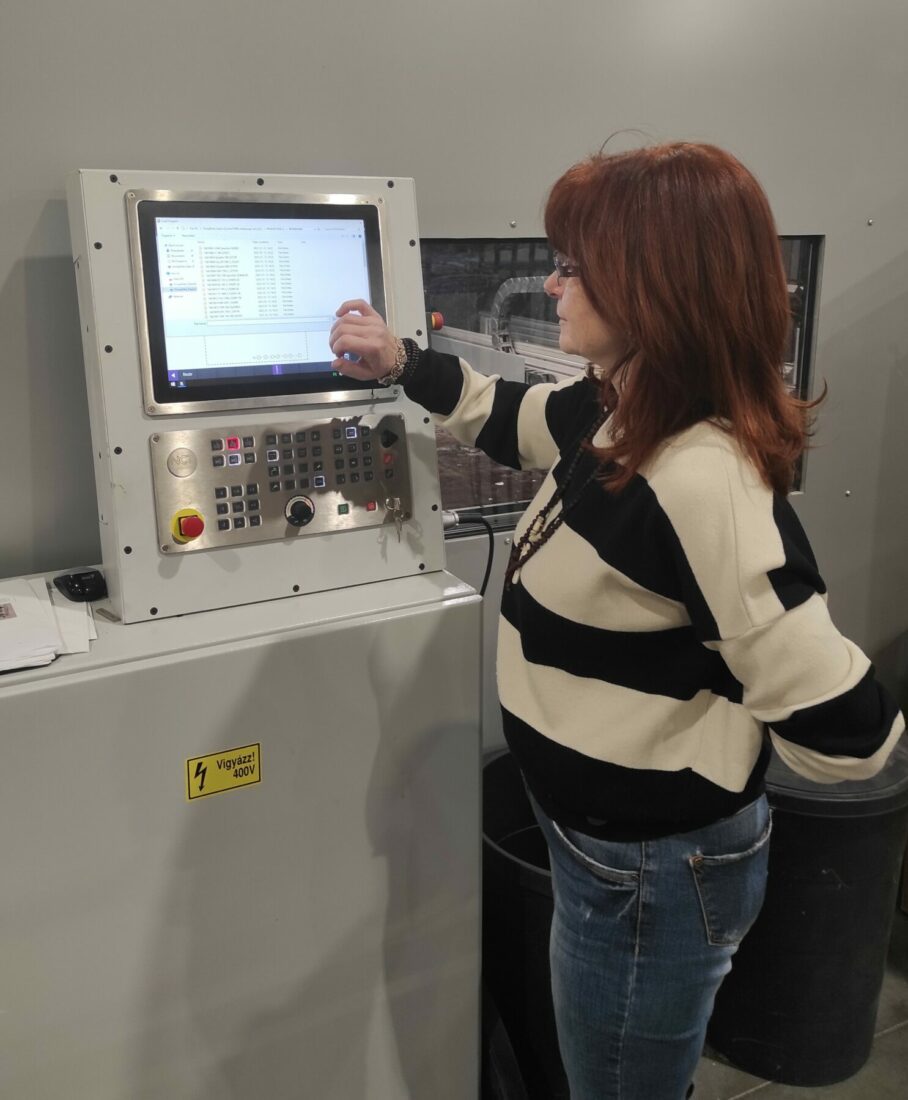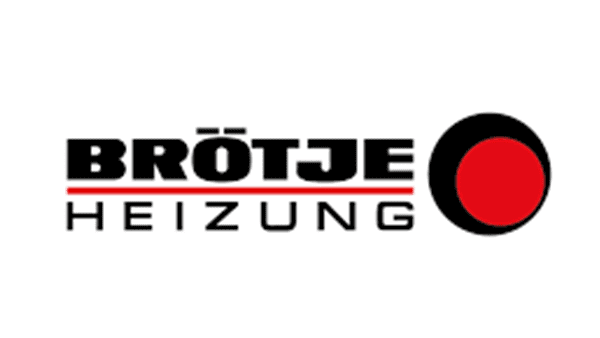An air to air heat pump is a type of heat pump that transfers heat from the outside air to the inside of a building to provide both heating and cooling. It extracts heat from the outdoor air and moves it inside through a refrigerant system. This can be especially useful in regions where outdoor temperatures fluctuate significantly.
The air-to-air heat pump, also known as an air source heat pump, consists of an outdoor unit containing the compressor and a fan and one or more indoor units distributing the heated or cooled air throughout the building. The system can be connected to existing central heating systems or used as a standalone heat pump for heating and cooling solution. Using the air as its source of heat, the air-to-air heat pump is an environmentally friendly alternative to gas boilers or oil heaters, reducing carbon emissions and helping to lower energy bills. Additionally, since no groundwork is required for installation, it is a cost-effective solution with relatively low upfront costs.
Learn more about how heat pumps work.
what are the Benefits of an Air-to-Air Heat Pump?
An Air to Air Heat Pump is a highly efficient, cost-effective solution for heating and cooling homes. One of its key benefits is its easy installation process, making it a convenient choice for homeowners. It is compatible with existing heating systems, allowing seamless integration without major modifications.
Another advantage of an Air to Air Heat Pump is its reversible cooling capabilities. In addition to providing warmth during the colder months, it can cool down indoor spaces during hot summers. This versatility eliminates the need for separate air conditioning units, saving space and money.
Furthermore, Air to Air Heat Pumps has low maintenance requirements. They can operate efficiently for many years with proper care and regular servicing. This not only reduces the risk of breakdowns but also minimises repair costs.
In terms of safety, Air to Air Heat Pumps offers several advantages. Unlike gas boilers, no combustion is involved, eliminating the risk of carbon monoxide leaks. Additionally, no hot surfaces or open flames make them safer for households with children or pets.
Overall, the benefits of an Air to Air Heat Pump include easy installation, compatibility with existing systems, reversible cooling capabilities, low maintenance requirements, and safety advantages. These factors make it a reliable and energy-efficient solution for achieving optimal indoor comfort throughout the year.
How Much Money Can You Save Using an Air to Air Heat Pump?
Switching to an air to air heat pump can lead to significant savings on your heating and cooling bills. According to recent data from the U.S. Department of Energy, heat pumps are highly efficient and can save homeowners a substantial amount annually compared to traditional heating systems.
Savings Based on Current Heating System
The amount you can save depends on the type of heating system you currently use:
- Electric Resistance Heating: Homeowners using electric resistance heating can see the most substantial savings. Heat pumps are about three times more efficient, potentially saving around $500 to $1,000 annually.
- Oil Furnaces: Switching from oil furnaces to heat pumps can save homeowners approximately $900 per year. Oil prices can be volatile, and heat pumps offer a more stable and economical alternative.
- Propane Heating: Savings can be significant for those switching from propane heating systems, with an average of $850 per year. Propane costs fluctuate, making heat pumps a more reliable option.
- Natural Gas: While natural gas is relatively cheap, heat pumps still offer some savings, particularly in areas where electricity prices are lower. Homeowners can expect to save around $200 per year (Synapse Energy).
Efficiency and Cost-Effectiveness
Heat pumps are efficient because they transfer heat rather than generate it. This can result in energy savings of up to 50% compared to electric resistance heaters and up to 30% compared to oil and propane systems. The efficiency of heat pumps is measured by their Seasonal Energy Efficiency Ratio (SEER) and Heating Seasonal Performance Factor (HSPF). Higher ratings indicate more efficient systems, which translate to lower operational costs (Weather Engineers, Inc) (EnergySage).
Climate Impact
Heat pumps perform well in both mild and extreme climates. In colder regions, modern heat pumps designed for cold climates can operate efficiently even at temperatures below freezing, ensuring cost-effective heating throughout the year.
Rebates and Incentives
Many states offer rebates and incentives to offset the initial installation costs of heat pumps. These can significantly reduce the upfront investment and improve the overall cost-effectiveness of switching to a heat pump system (Weather Engineers, Inc) (Synapse Energy).
In summary, installing an air to air heat pump can result in substantial savings on your annual heating and cooling bills. The exact amount varies based on your current heating system, local energy costs, and available incentives, but the long-term financial and environmental benefits make heat pumps a compelling option for homeowners.
If you need more specific figures or additional information, you can refer to the U.S. Department of Energy’s page on heat pumps.
Types of Air-to-Air Heat Pumps
Air-to-air heat pumps is an air-source heat pump that provides an efficient and cost-effective solution for both heating and cooling spaces—these heat pumps extract heat from the outside air and transfer it indoors. In the heating mode, they absorb heat from the outdoor air and share it inside to heat the space. In a cooling way, the process is reversed, with heat being removed from the indoor air and expelled outside, cooling the room.
Air sourced heat pumps consist of two main components: an outdoor unit, which houses the compressor and the heat exchanger, and one or more indoor units, which distribute the heated or cooled air throughout the space. This type of heat pump is often used in homes and smaller buildings to provide comfortable indoor temperatures year-round. They are relatively easy to install. They can be used as a standalone heating and cooling system or combined with supplemental heat sources such as gas boilers or other heating elements for extra heat.

Single Split System
The Single Split System is an air-to-air heat pump system that provides efficient heating and cooling for your space. This system comprises a single outdoor unit connected to a single indoor unit.
One of the key features of the Single Split System is its simplicity. Installation and maintenance are significantly easier than other heat pump systems with only one outdoor and one indoor unit. This makes it ideal for homeowners who prefer a straightforward and hassle-free solution.
Another benefit of the Single Split System is its cost-effectiveness. Since this system focuses on heating and cooling a single space, it is more affordable than larger multi-split or central heating systems. This makes it a practical choice for smaller homes or rooms requiring independent temperature control.
The Single Split System offers efficient air-to-air heat pump technology, allowing you to enjoy comfortable indoor temperatures all year round. It transfers heat between the outdoor and indoor units to provide heating during colder months and cooling during warmer months. This helps you save on energy bills and reduces your carbon footprint.
In conclusion, the Single Split System is a practical and cost-effective air-to-air heat pump system that offers your space simplicity and efficient temperature control. Choose this system for a comfortable and energy-efficient solution.
Multi-Split System
The Multi-Split System is a key component within an air-to-air heat pump system that provides efficient heating, cooling, and domestic hot water. It allows for a single outdoor unit to connect with up to 3 indoor units and a domestic hot water tank.
This system is designed to provide maximum flexibility in meeting the heating and cooling needs of different areas within a home or building. The Multi-Split System allows multiple indoor units to be installed in separate rooms or areas, allowing for independent temperature control and personalised comfort settings.
Moreover, the Multi-Split System provides air conditioning and heating and offers the added benefit of supplying domestic hot water. With the integration of a domestic hot water tank, the system efficiently heats water for everyday household use, reducing the reliance on additional heating sources like gas boilers. This feature is typically associated with air to water heat pumps, making the Multi-Split System a versatile solution.
This highly efficient and cost-effective versatile system offers a sustainable solution for heating and cooling needs. By utilising a single outdoor unit, the Multi-Split System reduces the carbon footprint and minimises upfront costs compared to installing individual cooling or heating units for each area.
In conclusion, the Multi-Split System within the air-to-air heat pump seamlessly integrates heating, cooling, and domestic hot water supply. Its flexibility, efficiency, and cost-effectiveness make it ideal for maintaining comfortable indoor temperatures while minimising energy costs. This integration of air-to-air and air to water heat pump features highlights the system’s comprehensive approach to home climate management.
Packaged Systems
Packaged systems are a popular option in air-to-air heat pump systems, as they offer heating and cooling capabilities in a compact and efficient design. These systems are designed to provide year-round comfort by utilising the air as a heat source in the winter and a heat sink in the summer.
A packaged system typically includes an outdoor unit, also known as the condensing unit, that houses the compressor and the heat exchanger. This unit extracts heat from the air during the cooling mode and releases it outside. During the heating mode, the outdoor unit absorbs heat from the outdoor air and transfers it indoors.
In addition to the outdoor unit, a packaged system includes one or more indoor units responsible for distributing the heated or cooled air throughout the building. Depending on the space’s specific needs, these units can be wall-mounted, ceiling-mounted, or floor-mounted.
Some packaged systems also have the option to include a hot water tank, which can supply domestic hot water. This provides the convenience of having a single system that can fulfil heating and hot water needs.
Packaged systems are versatile and efficient solutions for heating and cooling in air-to-air heat pump systems. Their compact design and range of installation options make them popular for residential and commercial applications.
Components of an Air-to-Air Heat Pump System
An air-to-air heat pump is a type of heat pump that transfers heat from the outdoor air to the indoor air, providing both cooling and heating to a space. It works by extracting heat from the outside air and using it to heat indoor play during cold weather. In hot weather, it reverses the process, removing heat from the indoor air and releasing it outside to cool the room.
The attitude to air heat pump system has several components that work together to transfer heat and maintain comfortable indoor temperatures efficiently. These components include an outdoor unit, which houses the compressor and condenser coil, and one or more indoor units, which distribute the conditioned air throughout the space. The outdoor unit collects the heat from the outdoor air and transfers it to the indoor units through refrigerant lines. The indoor units then distribute the conditioned air to different space areas. The system is controlled by a thermostat, which allows users to set their desired indoor temperature.
Overall, air-to-air heat pump systems provide an efficient and cost-effective way to heat and cool spaces while reducing energy consumption and lowering carbon footprints.
Outdoor Unit
The outdoor unit is a vital component of an air-to-air heat pump system, responsible for extracting heat from the outside air and transferring it indoors to provide heating during colder months. It comprises several key components, including the compressor, condenser coil, and fan.
The compressor’s primary role is to pressurise the refrigerant, raising its temperature and increasing its heat-carrying capacity. The condenser coil is where the refrigerant releases heat to the outside air, allowing it to cool down and condense into a liquid. The fan helps to distribute the outdoor air across the condenser coil, facilitating heat transfer.
The proper installation location of the outdoor unit is crucial for optimum performance and efficiency. It should be placed on a firm and level surface, ensuring stability and noise reduction. Additionally, sufficient space should be provided around the unit to allow for proper airflow and easy access for maintenance and repairs. Accessibility is essential for routine maintenance tasks such as cleaning the condenser coil and replacing the air filter.
Placing the outdoor unit inside, such as in a basement or garage, is not recommended due to various limitations. The trapped air in such an environment would eventually deplete warmth, reducing heating efficiency. It is best to position the outdoor unit in an open space where it can extract ample heat from the outside air to provide effective heating indoors. Proper installation location is crucial for achieving optimal performance and ensuring the longevity of the air-to-air heat pump system.
Reversing Valve
The indoor unit or units provide efficient heating and cooling for indoor spaces in an air-to-air heat pump system. These indoor units distribute conditioned air throughout the building, ensuring a comfortable temperature.
The main function of the indoor unit is to capture the heat or coolness from the air and distribute it throughout the space. It accomplishes this by utilising a fan to draw in the air and passing it over a heat exchanger. This heat exchanger contains a liquid refrigerant that absorbs or releases heat, depending on whether the system is in heating or cooling mode.
The indoor units work with the outdoor team, which contains the compressor and the condenser. The compressor pressurises the refrigerant, and the condenser releases heat or coolness into the outdoor air. The refrigerant then returns to the indoor unit, repeating the process.
The indoor units can also have adjustable louvres or multiple fan speeds for customised airflow. Some models also have built-in filters to improve indoor air quality by removing dust, allergens, and pollutants.
Overall, the indoor units in an air-to-air heat pump system are responsible for distributing conditioned air throughout the building, providing efficient heating and cooling for a comfortable indoor environment.
Hot Water Tank (Optional)
In an air-to-air heat pump system, the primary purpose of a hot water tank is to provide ready access to hot water for various household needs. While the heat pump can heat the water to temperatures of around 35-40°C, it is important to note that this may not be hot enough to effectively kill bacteria within the tank. Therefore, it is recommended that the hot water tank be timed to heat up to a temperature of 60°C once a week to eliminate any potential bacterial growth.
A hot water tank as part of an air-to-air heat pump system offers several benefits. Firstly, it provides a convenient and readily available hot water supply for bathing, cleaning, and other domestic activities. Additionally, including a hot water tank allows for a buffer of hot water to be stored, ensuring a continuous supply even during periods of high demand.
However, some disadvantages exist when opting for a hot water tank in an air-to-air heat pump system. The upfront costs of installing and maintaining a hot water tank can be significant. Additionally, the tank takes up space and may require additional plumbing connections. Furthermore, the regular heating of the tank to 60°C can result in slightly higher energy consumption, potentially impacting energy bills.
In conclusion, the optional inclusion of a hot water tank in an air-to-air heat pump system provides the convenience of readily available hot water. However, it is important to ensure that the water is heated to a temperature of 60°C once a week to eliminate potential bacteria. Though it offers convenience and continuous hot water supply benefits, it is essential to consider the upfront costs, space requirements, and possible increases in energy consumption when deciding whether to incorporate a hot water tank into the system.
Installation Considerations for an Air-to-Air Heat Pump System
An air-to-air heat pump system is an air-source heat pump used for heating and cooling. It extracts heat from the outside air and transfers it into the indoor environment. This system consists of an outdoor unit and one or more indoor units responsible for distributing the conditioned air throughout the building.
Several considerations need to be considered when installing an air-to-air heat pump system. First and foremost, system sizing is crucial to ensure optimal performance and energy efficiency. A professional HVAC contractor will thoroughly assess the building’s heating and cooling requirements, as well as the size and layout of the rooms, to determine the appropriate capacity and placement of the units.
Another important consideration is the location of the outdoor unit. It should be positioned in a well-ventilated area with plenty of clearance for proper airflow. The team should also be protected from direct sunlight and potential obstructions, such as trees or fences, that could impede its performance.
In addition to the outdoor unit, the placement of the indoor units is also vital. They should be strategically positioned in areas where they can distribute the conditioned air evenly throughout the space. Factors such as room size, layout, and obstacles should be considered to ensure optimum comfort.
Furthermore, installing an air-to-air heat pump system may require modifications to the existing ductwork or new ducts. Proper insulation of the vents is also essential to prevent heat loss or gain during the distribution process.
Installing an air-to-air heat pump system requires careful planning and professional expertise. Homeowners can ensure a well-functioning, energy-efficient heating and cooling solution by considering sizing, location, and ductwork.
Location and Space Requirements
When installing an air-to-air heat pump system, it is important to carefully evaluate the location and space requirements. Unlike air-to-water heat pumps, which typically require more space for a hot water cylinder and larger radiators, air-to-air heat pumps offer a more space-saving solution.
Regarding location, air-to-air heat pump systems require an outdoor unit, usually installed outside the property. This unit extracts heat from the outdoor air, even in low temperatures, and transfers it to indoor units via refrigeration. The indoor units, usually wall-mounted or ceiling-mounted, distribute the warm air throughout the building. This means that the indoor units don’t take up much space and can be installed in various rooms, providing flexibility in heating requirements.
One of the major space-saving benefits of air-to-air heat pumps is the removal of traditional radiators. This system does not need radiators as the warm air is distributed through air ducts. This saves space and eliminates the need for maintenance and the potential for heat loss associated with radiators.
Additionally, air-to-air heat pumps offer the advantage of not requiring a separate hot water cylinder, unlike air-to-water heat pumps. This further reduces the space requirements for installation.
In summary, air-to-air heat pump systems are a space-saving heating solution as they eliminate the need for larger radiators and hot water cylinders. They offer flexibility in location and can be installed in various rooms, distributing warm air via indoor units and air ducts.
Source of Heat and Cooling Options
An air-to-air heat pump system utilises various heat and cooling sources to provide heating and cooling functions. The main options for heat and cooling in these systems include air conditioning units, underfloor heating, ground-source heat pumps, and air-source heat pumps.
Air conditioning units are commonly used for cooling in air-to-air heat pump systems. They extract heat from indoor air and dissipate it outside, resulting in a cooler indoor environment. On the other hand, underfloor heating is a popular option for heating purposes. This system utilises pipes or electric heating elements installed beneath the floor to distribute heat evenly throughout the room.
Ground source heat pumps are another source of heat and cooling in air-to-air heat pump systems. These pumps extract heat from the ground during the winter and release it indoors, providing efficient heating. In the summer, the process is reversed, and the heat pump transfers heat from indoors to the ground, effectively cooling the indoor space.
Lastly, air source heat pumps extract heat from the outside air and transfer it indoors during the winter for heating purposes. In the summer, the process is reversed, and the heat pump releases heat from indoors to the outside air, providing cooling.
In summary, air-to-air heat pump systems utilise a variety of sources for heat and cooling, including air conditioning units, underfloor heating, ground-source heat pumps, and air-source heat pumps. This versatility allows for efficient heating and cooling throughout the year.
Are larger Radiators and Boilers Needed?
Air-to-air heat pumps significantly impact the sizing of radiators and boilers in heating systems—these heat pumps extract heat from the outdoor air and transfer it indoors to provide warmth. However, unlike traditional gas boilers, heat pumps produce heat at a lower temperature.
Due to the lower operating temperatures of heat pumps, larger radiators are needed to distribute the heat effectively and achieve the desired level of warmth in indoor spaces. The larger surface area of these radiators allows for better heat emission, compensating for the lower temperature output of the heat pump.
Additionally, the lower operating temperatures of heat pumps may also necessitate the upgrading or replacement of existing boilers. Traditional boilers are typically designed to operate at higher temperatures, which may not be compatible with the lower temperature requirements of heat pumps. Upgrading or replacing the boiler can ensure compatibility and optimal performance with the heat pump system.
In conclusion, air-to-air heat pumps require larger radiators to compensate for the lower temperature output and achieve the desired level of warmth. Boilers may also need to be upgraded or replaced to accommodate the lower operating temperatures of heat pump systems. These adjustments to the heating system are necessary to maximise the efficiency and effectiveness of the air-to-air heat pump technology.
Placement of the Outdoor Unit
When installing an air-to-air heat pump system, the placement of the outdoor unit plays a crucial role in its overall performance and efficiency. It is important to have the outdoor unit installed by an authorised technician in a suitable location.
The outdoor unit should be placed on a firm surface that adequately supports its weight. This ensures stability and prevents any unnecessary vibrations. Sufficient space around the unit should allow for proper airflow and connections.
One consideration when choosing the location is maintaining a distance from plants and shrubs. This helps to prevent any potential obstruction of airflow and reduces the risk of leaves or debris entering the unit.
Accessibility is another important factor to keep in mind. The outdoor unit should be easily accessible for services and maintenance. This allows technicians to inspect, clean, and maintain the team easily.
It is advisable to avoid placing the outdoor unit in areas such as the loft or conservatory. These spaces may have limited airflow, reducing efficiency and increasing energy consumption.
In conclusion, an authorised technician should place the outdoor unit for an air-to-air heat pump system in a suitable location. By ensuring a firm surface, sufficient space for airflow and connections, and considering factors like distance from plants and accessibility, the system can operate optimally for maximum comfort and energy efficiency.







































